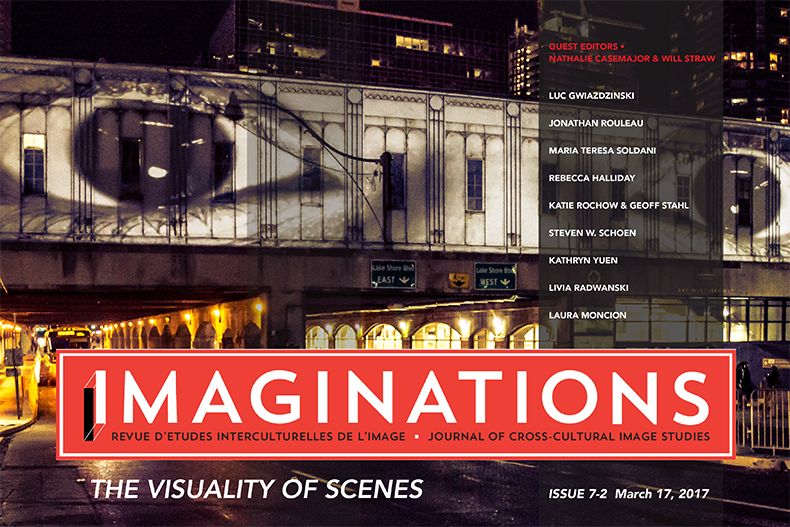Toronto’s Nuit Blanche: Site-Specificity, Spectacle, And Spectatorship
DOI:
https://doi.org/10.17742/IMAGE.VOS.7-2.9Abstract
Abstract | This article examines the visual trends in artworks exhibited over the years at Toronto’s Nuit Blanche in relation to the changing social scene of urban spectatorship. Since its inception in 2006, there has been a noticeable shift away from site-specific art that captures the visual flavour of particular areas of Toronto—that is, art that not only engages with the city’s physical features but also with the cultural, social, and political histories of its surrounding local sites. Instead, there has been a move towards popular artworks by predominately international artists that capitalize on a sense of the spectacular. These spectacular artworks call attention to themselves with their monumental size and their exaggerated aestheticization of artificial lights which illuminate the darkness of night. At the same time, there has been a similar change in the kinds of social interaction expected and enacted by spectators attending Nuit Blanche. The critical conversations of the early years have given way to the generalized popular party buzz of more recent incarnations. Following the claim by Nicolas Bourriaud in Relational Aesthetics that “art is a site that produces specific sociability,” this article teases out a relationship between the artworks exhibited at Toronto’s Nuit Blanche and the politics of sociability that surround them. It argues that as the event continues to favour the spectacular, the cost is its relationship to the site-specific, in that the overall event has not maintained a good balance between the two. So while this produces tension with and between spectacular and site-specific artworks displayed at Nuit Blanche, this article explores how the event’s social scene is much more dynamic and unpredictable. Spectators are able to negotiate the artistic landscape in deciding what they want to see and do, and they have therefore risen to occupy an increasingly significant role at Toronto’s Nuit Blanche through their ability to choose customised combinations of the spectacular and the site-specific.
Résumé | Cet article examine les tendances visuelles des œuvres exposées au fil des ans à la Nuit Blanche de Toronto par rapport à l’évolution de la scène sociale et de ses spectateurs urbains. Depuis la création de l’événement en 2006, l’art in situ (site-specific art) a cédé du terrain. Les œuvres in situ sont dédiées à certains quartiers de Toronto. Cette méthode artistique tient compte des aspects physiques de la ville, mais aussi des aspects culturels, sociaux, et de l’histoire politique des sites locaux environnants. À la place, l’accent a été mis sur des œuvres d’art qui tirent parti de l’aspect spectaculaire de la Nuit Blanche de Toronto. Ces œuvres d’art spectaculaires attirent l’attention sur une esthétique de la nuit urbaine de façon exagérée alors que les lumières artificielles brillent intensément dans l’obscurité de la nuit. Parallèlement, il y a eu un changement dans les types d’interaction sociale anticipés et adoptés par les spectateurs qui assistent à la Nuit Blanche. Les conversations critiques des premières années ont fait place à une effervescence populaire générale née des incarnations plus récentes. En s’appuyant sur les propos de Nicolas Bourriaud qui affirme dans Esthétique relationnelle que « l’art est un lieu qui produit une sociabilité spécifique », cet article explore la relation entre les œuvres exposées à la Nuit Blanche de Toronto et les sociabilités politiques qui les entourent. Il fait valoir qu’alors que la Nuit Blanche de Toronto lutte entre le spectaculaire et le in situ, ce sont les spectateurs qui sont devenus de plus en plus influents lorsqu’il est question de l’avenir de l’événement.
Downloads
Published
How to Cite
Issue
Section
License

This work by https://journals.library.ualberta.ca/imaginations is licensed under a Creative Commons 4.0 International License although certain works referenced herein may be separately licensed, or the author has exercised their right to fair dealing under the Canadian Copyright Act.




